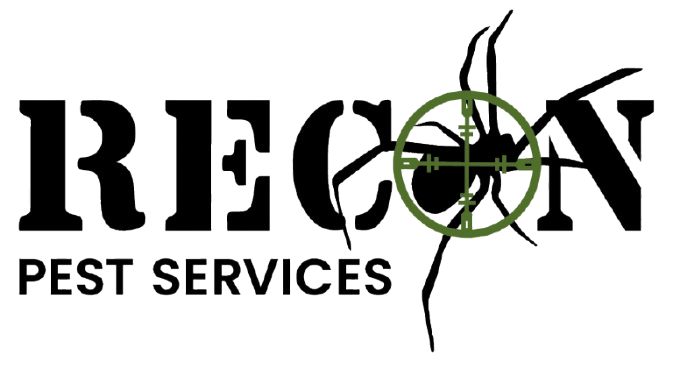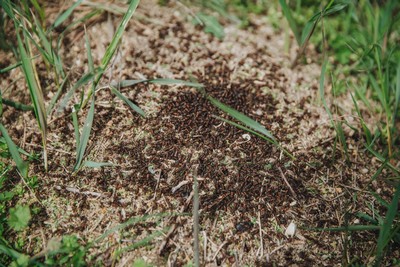Table of Contents
Cornfield ants are a common nuisance for Nebraskan homeowners, especially those living in rural areas or near farmlands. These tiny little guys love nothing more than the sap produced by aphids that are usually found in corn or soy fields across the midwest. While these ants may not seem consequential to you, if you work in agriculture, these little ants can damage crops and even infest storage spaces.
If you have a problem with a cornfield ant infestation, call on RECON Pest Services for a free consultation. Our pest techs are skilled at dealing with any major pest infestation from Omaha to Elkhorn, so we’ve got your back. Now, let’s jump into how to deal with these corn lovin’ critters.
Identification of cornfield ants
These ants are small, usually measuring around 1/8 inch in length, and have a light brown to black color. They have a single node between their thorax and abdomen, and their antennae have 12 segments. Cornfield ants are commonly found in fields, gardens, and lawns, but they can also make their way into our homes in search of food and water. If you live near a corn or soy field, check to see if there are any ants crawling around it. It’s very likely that if you see ants, they’re cornfield ants. Compare them to the ants you see on your property, and you might discover the name of your culprit.
What do cornfield ants even do?
Like most of their ant cousins, cornfield ants are highly sociable and live in large colonies of hundreds of other ants. Also like their other cousins, they love sweets. And very little in this world is sweeter than good old American sweetcorn. Cornfield ants are known to forage for food up to 100 feet away from their nests, making them highly adaptable and resourceful. They are attracted to sugary substances, such as nectar, honeydew, and spilled food, which is why they are commonly found near cornfields and areas with high aphid populations.
Why cornfield ants are a problem
These ants don’t cause a direct threat to people, but they can be particularly bad for those who grow food or gardens on your property. They can contaminate food and cause damage to untreated wood, and even bite if provoked. Additionally, these ants are great food for other pests like wasps and spiders, which can definitely present a more obvious threat to your wellbeing. If you have an ant infestation, the wise move is to make sure you don’t let the problem grow out of control!
6 tips for removing cornfield ants
No more husk, here’s the real cob on this article. These tips from our pest control technicians are foolproof ways to keep cornfield ants out of your home, garden, or farm.
Tip 1: Keep your surroundings clean and free of food sources near your home
Regarding keeping your home ant free, one of the best ways to do this consistently is to make sure the area in and around your home is free from clutter and trash. Ants love to eat on decaying plant matter and trash from human food, so clean up any sweet spills and take out the trash regularly.
Tip 2: Ant-proofing your home
Like many pests out in the wild, cornfield ants make their way into homes and barns through cracks in the walls, floors, or windows. Seal off these points with material like caulk or weather stripping. Also, don’t forget to trim the vegetation near your home. Ants can use tree branches and bushes to climb up into windows for their infiltration routes. Don’t make it easy for them, make sure your home is well sealed to keep pests out. Your gas bill will thank you come next winter!
Tip 3: Use natural remedies to repel cornfield ants
For smaller scale infestations, natural scents like peppermint oil and castor oil repel all sorts of pests, cornfield ants especially included. The pungency of these scents overwhelms the ant’s faculties, and makes it difficult to navigate via pheromones like they’re used to. Of course, this likely won’t work on an industrial scale for the farmers reading this, but it can be a great way to keep them out of your home and garden.
Tip 4: Building a better ant trap
Ant baits and traps can be an effective way to eliminate cornfield ant colonies. Place ant baits near ant trails or areas where you have observed high ant activity. The ants will be attracted to the bait, consume it, and carry it back to their nests, eventually eliminating the entire colony. Make sure to follow the instructions on the bait packaging and avoid disturbing the ants while they are feeding. Ant traps can also be placed in areas where ants are frequently seen, such as near windows or in the kitchen. These traps will attract and capture the ants, preventing them from further infesting your home.
Tip 5: Try your hand at using insecticides
Can’t get the ants gone and need to up the ante? Insecticides are a sure bet for more severe infestations. While there are tons of options on the market, be sure to use one that is the right level of severity for your situation. Don’t use agricultural grade insecticides indoors of course, and don’t expect a spray can from Home Depot to take care of your corn field. Always be sure to check the label to make sure you’re using the correct amount, and taking the proper safety precautions.
Tip 6: Call RECON Pest Services for help!
If despite your best efforts the cornfield ant infestation persists, sometimes the wisest thing to do is to call for help. RECON Pest Services has the tools and knowledge needed to get cornfield ants out of any home or garden with tried and tested integrated pest management techniques. Call us today for a free consultation!
Hiring professionals to deal with cornfield ant infestations
If you are dealing with a severe or persistent cornfield ant infestation, it is highly recommended to hire a professional pest control company. RECON Pest Services is here to help you keep ants away from your property year round. Our experienced technicians will conduct a thorough inspection, develop a customized treatment plan, and provide ongoing monitoring and prevention services. Contact us today for a free quote!
Conclusion
Ant infestations can be a real bother, especially if you’re a farmer or live near farms. Armed with these tips, hopefully you can keep these fructose loving fiends away from your home.
If these tips aren’t enough and you need some more hands on assistance, RECON Pest Services is here to help get your Omaha or Lincoln home free from bugs year round. Contact us today for a free consultation.






